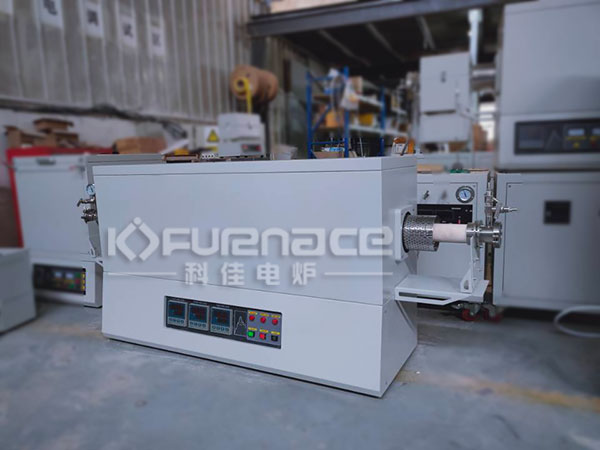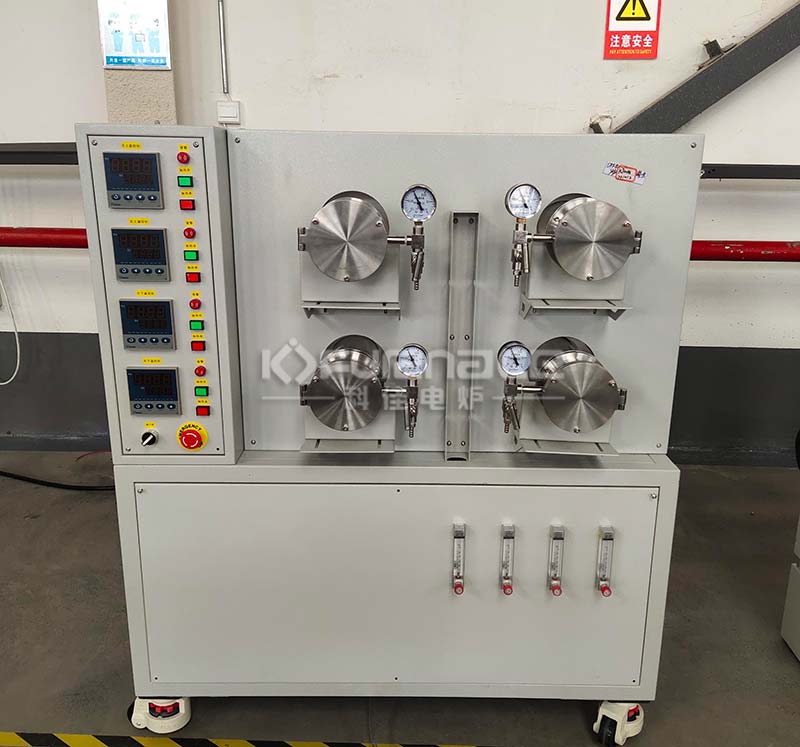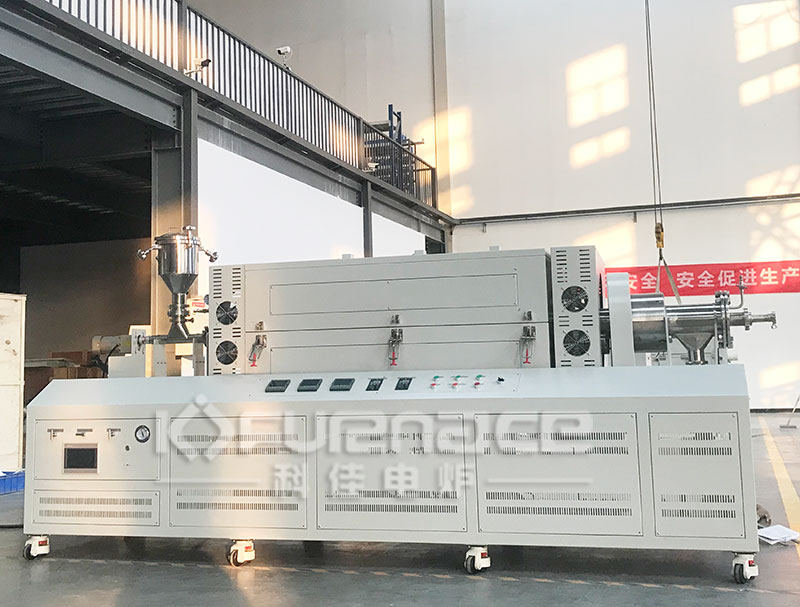A multi temperature zone tube furnace is a widely used equipment in materials science research and experiments. Its design allows for multiple temperature zones to be set within the same tube, each of which can independently control the temperature. This ability gives multi temperature zone tube furnaces unique advantages in studying complex material reactions, preparing functional materials, and simulating various heat treatment processes, hence they are vividly referred to as “refining furnaces” in materials science.

A commonly used experimental three temperature zone tube furnace (click on the image to view product details)
The principle and structure of a multi temperature zone tube furnace:
A multi temperature zone tube furnace typically consists of the following main components:
Furnace body: This is the core part of the furnace, made of high-temperature resistant materials, with heating elements installed inside to generate a high-temperature environment.
Multi temperature zone design: There are multiple independent temperature zones distributed along the length direction of the pipes inside the furnace, each with independent heating elements and temperature control systems. These temperature zones can be set to different temperatures to form temperature gradients.
Control system: including temperature controller, sensors, and data acquisition system, used for precise control and monitoring of temperature in various temperature zones.
Protective atmosphere system: Some experiments need to be conducted under specific atmosphere conditions, such as inert gas, reducing atmosphere, or oxidizing atmosphere. Tube furnaces are usually equipped with gas flow control systems that can maintain the desired atmosphere environment inside the furnace.

Customized four channel tube furnace (click on the image to view product details)
Application examples:
Material synthesis and preparation: The multi temperature zone tube furnace can accurately control the reaction temperature and time, making it suitable for synthesizing complex compounds and nanomaterials. For example, in the preparation of perovskite solar cell materials, different temperature ranges can be set to achieve gradual decomposition and recombination reactions, improving the crystallization quality of the materials.
Heat treatment research: In the heat treatment process of metal and ceramic materials, different temperature ranges can simulate real heat treatment processes, such as quenching, annealing, and tempering. Through this method, the phase transition behavior and mechanical property changes of materials can be studied at different temperatures.
Catalyst research: Catalysts typically require activation and testing at high temperatures. A multi temperature zone tube furnace can simulate the temperature environment of catalysts under actual working conditions, helping researchers optimize the preparation process and reaction performance of catalysts.
Solid state reaction research: In solid-state chemical reactions, reactants need to gradually react at different temperatures to generate the target product. The temperature gradient design of multi temperature zone tube furnace can effectively control the reaction process, avoid the occurrence of side reactions, and improve product purity.
Advantages:
Accurate control: The independent control system for each temperature zone allows for precise adjustment of the reaction process, ensuring the repeatability and reliability of the experiment.
Flexibility: Temperature distribution can be freely set according to experimental requirements, adapting to different types of materials and reactions.
Efficiency: Multi temperature zone design allows for multiple reaction steps to be carried out simultaneously in one experiment, saving time and resources.

Temperature zone rotary tube furnace (click on the image to view product details)
So, as a key equipment in material science research, the multi temperature zone tube furnace plays an important role as a “medicine refining furnace”. Its multi temperature zone design and precise control capabilities provide strong support for material synthesis, heat treatment, and catalyst research, and are important tools for promoting the development of materials science.Click to learn more tube furnaces! Or click on online customer service to learn more about product information!